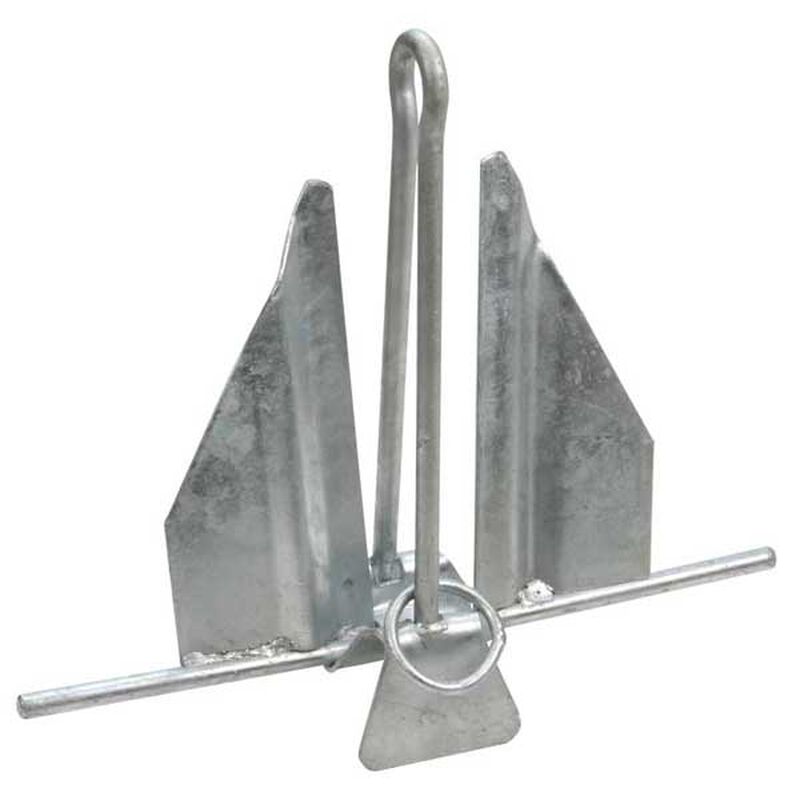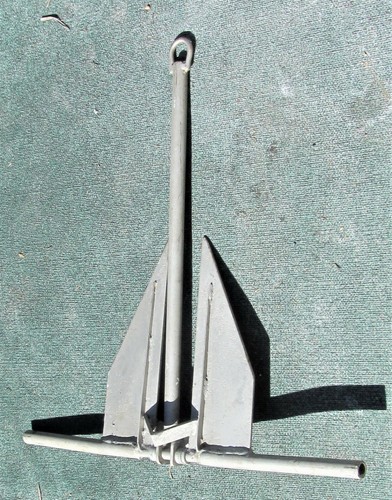The Definitive Guide to Fluke Style Anchor
Table of ContentsLittle Known Questions About Fluke Style Anchor.The Basic Principles Of Fluke Style Anchor Fluke Style Anchor Things To Know Before You BuyFluke Style Anchor - The FactsThe smart Trick of Fluke Style Anchor That Nobody is DiscussingThe Greatest Guide To Fluke Style Anchor
There are a number of brand names as well as styles of anchors on the marketplace. They all have various toughness and also weak points, and also brand-new ones are being established all of the time. So, just how is anyone expected to understand which to carry as well as deploy? We take an appearance at some new anchors and some old favorites.Clearly, we require anchors that hold, yet in what conditions? Cruisers might desire supports great on a range of sea floor kinds that are extremely protected in extreme wind and sea problems, while anglers anchoring repeatedly in an area with one base type, sand as an example, may choose a different design.
And also it is this trust fund factor that a support will certainly hold in adverse problems, on a lee coast, also when the boat swings as well as the set is reversed that must help sailors decide which is ideal. Right here's a primer on a few of the significant brand names and also or styles of supports, as well as what they're best made use of for.
Get This Report about Fluke Style Anchor
The reasonably broad claws of the support provide it holding power in a soft bottom, though not as much as a design like the Danforth, and it additionally does well on rough base, yet usually has problems with tough clay or grass bases. It's considered an excellent alternative for long-lasting anchoring in saltwater due to the fact that it has a tendency to stay safe via changes in the direction of pull.
The difference between a real Danforth anchor and also the many less-expense duplicates is generally the top quality of the materials and the angle of the flukes (Fluke Style Anchor). The Danforth people say their angle is maximum, as well as they have great deals of test data to confirm it. We believe they are fine as the primary support in particular areas on all sort of boats, and also constantly good as a back-up anchor, which all big boats ought to have.
They are fairly lightweight for the holding power they have since they have a great deal of area as well as surface area is one trick to holding power. This makes them efficient over supports that are usually twice their very own weight. They are one of minority anchors on the market that can be adjusted on the fly, and also can be angled for over here different bottom conditions.
The Basic Principles Of Fluke Style Anchor


For several boaters, in order to anchor sturdily on all the different kinds of bottom they might come across, bring two anchors remains in order: one for soft bottom, and also one for holding tight on framework. As well as, naturally, ensure each support is sized effectively for the boat you plan to use it with.
Mushroom supports depend primarily by themselves weight to hold placement, so they aren't generally of a lot helpful for boats of any genuine dimension. While a 10-pound mushroom works simply fine for a Jon boat in a lake, the big dimension required for bigger boats used in open waters makes them not look these up practical.
5 Easy Facts About Fluke Style Anchor Shown
Navy anchors dig in deep as well as hold tight extra with weight. Typically found on business vessels, navy supports are typically cast-iron building and construction, are heavy as well as susceptible to rusting, which is why they generally have plastic finishes when used on little boats. Old-fashioned angler supports have great holding top qualities and established promptly, yet are bulky to stow, even when folding the cross-piece that keeps the support fluke angled appropriately.
Rope alone hardly ever works and having an adequate size of chain in between the rope and the support is vital. Just what is that length? It depends on the dimension of your boat and also the depth of the water you generally anchor in, yet as a general general rule you'll intend to utilize at the very least 10 feet of chain as well as ideally, the very same size of chain as your watercraft's LOA.
to ensure the watercraft stays when we drop that support to the base? Beginning with just how much range (extra line) web link is discharge after the anchor hits bottom. At a bare minimum in tranquil water a three-to-one ratio to the water depth suffices. If the water is 20' deep, for instance, much less than 60' of line isn't most likely to be enough.
The Of Fluke Style Anchor
There are a variety of watercraft anchors offered, constructed of various products, as well as typically with complex names. This post will talk about the most prominent sorts of boat supports, how to choose the most effective anchor for your watercraft, the most typical product types, as well as additionally provide an introduction of various naming conventions (Fluke Style Anchor).
The Bruce, or Claw, continues to be one of the most preferred supports amongst recreational sailors in North America. The Bruce was developed in the 70s by the Bruce Support Team.
Collections easily. Unpleasant one item layout. Reduced holding power per extra pound. Carries out well in the majority of bottoms; Struggles in difficult bases such as clay, or hefty yard. Both the CQR/Plow as well as the Delta/Wing are a plow style support. The most substantial difference in between these supports is the reality that the CQR has a hinged design whereas the Delta is a one piece style.
Fluke Style Anchor for Beginners
Regardless of this, it has fairly low holding power and it constantly has a hard time in independent examinations. It's likewise rare to locate a CQR under 25 pounds offering itself to the claiming "There's no such thing as a small CQR". Despite these shortcomings, the hinged layout makes it much more receptive to wind as well as trend adjustments as contrasted to other supports.